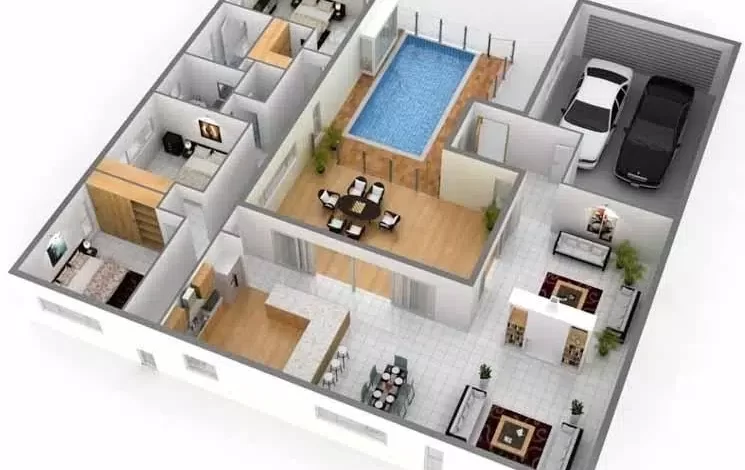The field of architecture has witnessed significant advancements with the introduction of 3D technology. 3D architectural jobs have emerged as a specialized and sought-after career path within the industry. These professionals utilize cutting-edge software and technologies to create realistic and immersive 3D visualizations of architectural designs. In this article, we will explore what 3D architectural jobs entail, the skills required to excel in this field, and the impact of 3D visualization on the architectural industry.
3D architectural jobs involve the creation of visual representations and virtual walkthroughs of architectural designs. Professionals in this field utilize specialized software, such as AutoCAD, Revit, SketchUp, and 3D Studio Max, to develop 3D models, renderings, and animations. These visualizations provide clients, architects, and stakeholders with a realistic preview of the final architectural project before its construction, enabling them to make informed decisions and assess design feasibility.
Types of 3D Architectural Jobs
- 3D Architectural Designer

3D architectural designers are responsible for creating detailed 3D models and visualizations of architectural designs. They collaborate with architects, engineers, and clients to understand design requirements and convert 2D plans into realistic 3D representations. They employ their technical expertise and artistic skills to ensure accuracy, aesthetics, and functionality in their designs. - Architectural Renderer

Architectural renderers specialize in creating high-quality renderings and visualizations of architectural designs. They focus on lighting, textures, materials, and realistic details to bring designs to life. Architectural renderers work closely with designers and clients to understand their vision and create captivating visual representations that effectively communicate design intent. - Virtual Reality (VR) Specialist

Virtual Reality specialists in the architectural field leverage advanced technologies to create immersive virtual experiences of architectural designs. They develop interactive 3D models that allow clients and stakeholders to explore and navigate through virtual spaces using VR headsets. VR specialists integrate real-time rendering and interactive elements, enabling users to assess design concepts from various perspectives.
Skills Required for 3D Architectural Jobs
Professionals in 3D architectural jobs require a unique set of skills to succeed in this specialized field:
- Proficiency in 3D Modeling Software
Strong knowledge of software such as AutoCAD, Revit, SketchUp, and 3D Studio Max is essential for creating accurate and detailed 3D models. - Artistic and Design Skills
A keen eye for aesthetics, composition, and attention to detail is crucial for creating visually appealing and realistic architectural visualizations. - Understanding of Architectural Principles
Familiarity with architectural principles and design concepts allows professionals to accurately interpret architectural plans and effectively translate them into 3D models and visualizations. - Problem-Solving and Communication
Effective problem-solving skills and the ability to communicate complex ideas to clients, architects, and stakeholders are essential for successful collaboration and understanding project requirements. - Continual Learning and Adaptability
Given the rapid advancements in technology and software, staying updated with the latest tools and techniques is crucial in the 3D architectural field. Being adaptable to changing industry trends is also essential for career growth.
The rise of 3D architectural jobs has revolutionized the way architectural designs are presented and communicated. Through realistic visualizations and virtual walkthroughs, these professionals bring designs to life, enabling clients and stakeholders to make informed decisions. With the right mix of technical expertise, artistic skills, architectural understanding, problem-solving abilities, and adaptability, individuals can thrive in the dynamic and rewarding world of 3D architectural jobs. As technology continues to advance, the demand for skilled 3D architectural professionals is expected to grow, further enhancing the way architectural projects are conceived, evaluated, and executed.












